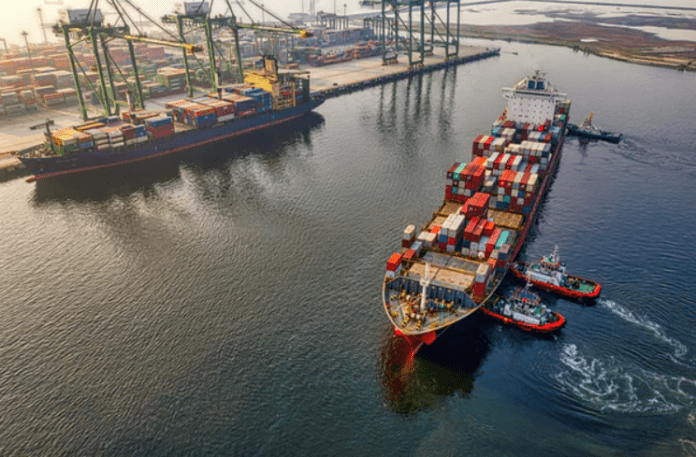An anomaly has arisen in container shipping data as US West Coast imports from Asia saw rates falling on fears of a US recession, while US dockers’ strikes on the East Coast and the election have raised fears of further disruption.
Xeneta chief analyst Peter Sand, however, considers Mexico a viable alternative for US imports, claiming that Mexican ports have already shown they can handle the increased demand, with China volumes increasing 30% year-on-year.
“Mexico effectively takes some risk off the table,” said Sand, “The July jump in contract rates indicates that some shippers and forwarders are hedging in an uncertain market by committing 10-25% of their volumes to Mexico, so they are not caught out by increased tariffs, or industrial action on the East Coast.”
Higher tariffs could also pose a potential threat to US import volumes with an early peak season seen as shippers shipping cargo early to avoid higher tariffs, expected whoever wins the general election, though Trump has warned of larger tariffs than the Democrats.
Linerlytica also reported that the SCFI has fallen for the fourth consecutive week on fears of a US recession.
Contract rates out of Asia to Mexico in mid-late September 2023 hovered at US$2,630/FEU, three months later on 31 December contract rates had declined more than 20% to a little over US$2,000/FEU, reflecting the end of the peak season.
Since then rates to Mexico were stable in Q1 of 2024, before declining again by 5%, US$1,893/FEU on 1 April. Minor fluctuations persisted until the end of Q2 and then on 1 July a US$700 leap, more than 35%, saw Mexico bound contracts jump to over US$2,550/feu, and falling again on 1 August by US$150.
Xeneta’s XSI index, which measures long-term rates, showed a narrowing of the gap between spot and contract prices on the major export trades out of Asia to the US and Europe. The analyst confirmed that contracted rates, which increased 2.5% month in July to 151.5, were driven by higher spot rates.
Crucially, however, the XSI sub-index which measures Asian exports, including the major headhaul trades to the US and Europe, increased 12.6% to 178.8.
Xeneta conceded that the shift in contract rates is small, but “Significant in terms of indicating a changing market sentiment, given that average spot rates are now peaking on the major fronthaul trades out of the Far East and long-term rates are starting to rise.”
Xeneta’s senior shipping analyst Emily Stausbøll added: “Some [rates] are still insulated. This is why the narrowing of the spread between the long-term market and short-term market is important – if spot continues to fall it means less upward pressure on long-term rates.”
Meanwhile, European headhaul rates have remained firm as carriers commit increased levels of capacity, due to the diversion of vessels away from Suez to the African Cape, absorbing much of the expected over-capacity for this year as vessel deliveries soared.
With the uncertainty around the Middle East conflict and when carriers will return their vessels to the far shorter Suez route, Stausbøll explained that shippers and forwarders have taken different contracting approaches.
There are those shippers at the lower end of market with long-term rates who are happy with those rates going forward. “The majority of long-term contracts sit in this area,” said Stausbøll.
Those shippers on higher rates, but with shorter contracts – meaning they are not stuck at the current rate level for 12 months. These shippers will be getting new rates every few months, a for a point and are not locked into higher rates should ships return to the Suez Canal.
In addition, there are shippers who have accepted Red Sea surcharges onto existing contract rates, with a mechanism to remove/modify this surcharge on a monthly or quarterly basis as the Middle East situation changes.
Mary Ann Evans
Correspondent at Large







